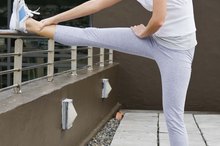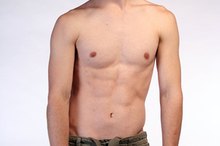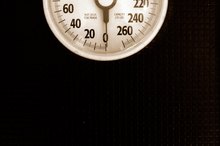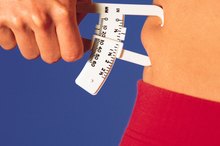How to Check Your Weight Without a Scale
Setting new goals for a healthy lifestyle often incorporates weighing yourself regularly. While most plans discourage a daily weigh-in, most recommend a weekly check of your weight. The numbers on the scale, however, don't always indicate the real benefits of your eating plan and exercise program. You can be losing pounds but not seeing results when you put on your jeans. A tape measure is often a better indicator of success – no scale required.
Why Scales Fail
Height plus weight equals your body mass index (BMI), which is often used as a measure to determine obesity or whether you are overweight. The BMI measurements, however, are a less-than-adequate measure for athletes, body builders and naturally muscular body types. Because muscle weighs more than fat, you may weigh as much or more than someone of the same size but carry less unhealthy fat on your body. BMI incorrectly reflects the ratio of body fat in up to 60 percent of women and 13 percent of men because it doesn't distinguish between their fat and nonfat mass.
Focusing on the numbers on your scale also encourages a variety of unhealthy eating habits, from fasting to extremely low-calorie diet plans. While often touted as quick weight-loss plans, the reality is that your body goes into starvation mode. The calories that you take in are used more efficiently so your body can store any excess as additional fat. In addition, extreme diets put all the focus on food and increase the hormones that make you feel hungry – a lose-lose proposition.
Measure Your Way to Success
Muscle Mass & BMI
Learn More
Instead of focusing on your weight, you can measure your way to a healthier life with a simple measuring tape. Too much fat around your waistline can affect your heart and other organs. The relative fat mass (RFM) focuses on your height and waist measurement to determine if you're carrying an unhealthy amount of fat.
The RFM formula is simple. Measure your height and waist circumference, just above your hip bones, in inches. Divide your height by your waist measurement and then multiply by 20. Subtract that number from 64 for a man or 76 for a woman. The final number is the percentage of your body fat.
The American Council on Exercise has set body fat percentages to determine healthy and unhealthy levels. The essential, or minimum, fat percentage is set between 10 and 13 percent for women and 2 to 5 percent for men. Athletes range from 14 to 20 percent for women and 6 to 13 percent for men. If the percentages are higher than 32 percent for a woman or 25 percent for a man, you are considered obese.
Other Ways to Check Weight
In addition to measuring the circumference of your body parts, from arms to waist to thighs, you can just try on a pair of jeans or a snug dress or skirt. The fit of your clothing tells you if you've lost weight. The exact number on the scale is often less important than being able to fit into that cute outfit that's grown a bit too tight.
While there are complicated formulas to determine your weight using water displacement, home methods are not the most accurate measures. You can get an idea of whether you're gaining or losing weight by filling the tub and marking the water level with a grease pencil. Submerge yourself and have a helper mark the new water level. Track that measurement weekly, and you'll know if you're gaining or losing weight.
Buying a scale isn't necessary to track your weight, but if you can't resist the siren song of the scale, you can go to the gym or your health provider's office and weigh yourself. If you're following a healthy eating plan and exercising according to your health provider's recommendations, a once-a-month weigh-in is enough to keep you on track.
Related Articles
References
- Cedars-Sinai: Cedars-Sinai Investigators Develop More Accurate Measure of Body Fat
- Harvard Health Publishing: Overweight vs Overfat: Is Your Scale Lying to You?
- The Washington Post: Why Diets Don’t Actually Work, According to a Researcher Who Has Studied Them for Decades
- MDApp: Relative Fat Mass (RFM) Calculator
Tips
- This method may be used on any object that may be safely submerged in water.
Warnings
- This method provides you with a close approximation of your actual weight, but a scale or other calibrated device must be used for real accuracy.
Writer Bio
With degrees in fine and commercial art and Spanish, Ruth de Jauregui is an old-school graphic artist, book designer and published author. De Jauregui authored 50 Fabulous Tomatoes for Your Garden, available as an ebook. She enthusiastically pursues creative and community interests, including gardening, home improvement and social issues.








